Nara, Japan is one of the most unique destinations in the world. The ancient city predates Kyoto as Japan’s first capital. It boasts many important temples and shrines, including eight UNESCO sites and one of the largest bronze Buddha statues in the world. But it’s Nara’s welcoming committee that makes a visit here memorable. Nara is home to over 1,000 deer which wander freely around the grounds. These deer are considered a national treasure of Japan, as they were once thought to be messengers to the gods. Feeding the deer is a special experience you won’t want to miss. Thankfully, a Nara day trip is easy to work into your Japan itinerary, given the city’s close proximity to both Kyoto and Osaka.
Things to Do in Nara
Nara Park
Most of the historic attractions are located within sprawling Nara Park. This is also where you will find the deer. If you want to feed them, buy the packets of special deer biscuits on offer, and you will be quickly surrounded once you start doling them out. While generally tame, the deer are highly motivated by food (aren’t we all?) and can become aggressive if they think you have treats. That said, I never felt that my safety was at risk around the animals.
Todai-ji Temple
The most important Buddhist temple in Nara is Todai-ji. It dates to the 8th century and holds a sacred bronze statue of the Great Buddha. The colossal image stands over 15 meters tall and is made of more than 400 tons of bronze! Two Bodhisattvas flank the Great Buddha and a pair of Nio guardian figures hover nearby. A beautiful wooden structure houses the statue and is one of the largest of its kind in the world. In addition to paying your respects to the Great Buddha, you can also have your fortune told and try to squeeze through a hole in a wooden pillar. The hole is the same size as the Buddha’s nostril and bestows enlightenment on those who can pull themselves all the way through.
Kasuga Taisha
Nara’s most important Shinto shrine is Kasuga Taisha. Hundreds of stone lanterns line the path to the shrine, which is nestled at the edge of a primeval forest. Deer roam freely among the lanterns. Kasuga Taisha also dates to the 8th century, though the existing structures have been rebuilt many times. The shrine honors the Nara city god and the Fujiwara clan, the powerful family that founded it.
Isuien Garden
Leave yourself at least an hour to wander through the peaceful Isuien Garden. It began as the private garden of a wealthy merchant and is still privately owned. Walking paths meander through the tranquil retreat, which is dotted with ponds and tea houses. I was fortunate to visit in March when the cherry trees were bursting forth. Isuien is also a popular destination during the fall foliage season.
Eating in Nara
There are no shortage of food options in Nara. Sit-down restaurants and ice cream shops front the street opposite the park. I’ve never had a bad meal in Japan, so you are probably safe picking one at random. I opted for a comforting bowl of udon topped with shrimp tempura. There are also plenty of snack stands if you’d rather eat on the go. I enjoyed a custard cream rice cake stuffed with a big juicy strawberry. Be sure to mind the deer if you plan to carry food around, and don’t feed them anything but the deer biscuits!
Are you ready to plan a Nara day trip?
PIN this blog for future reference!
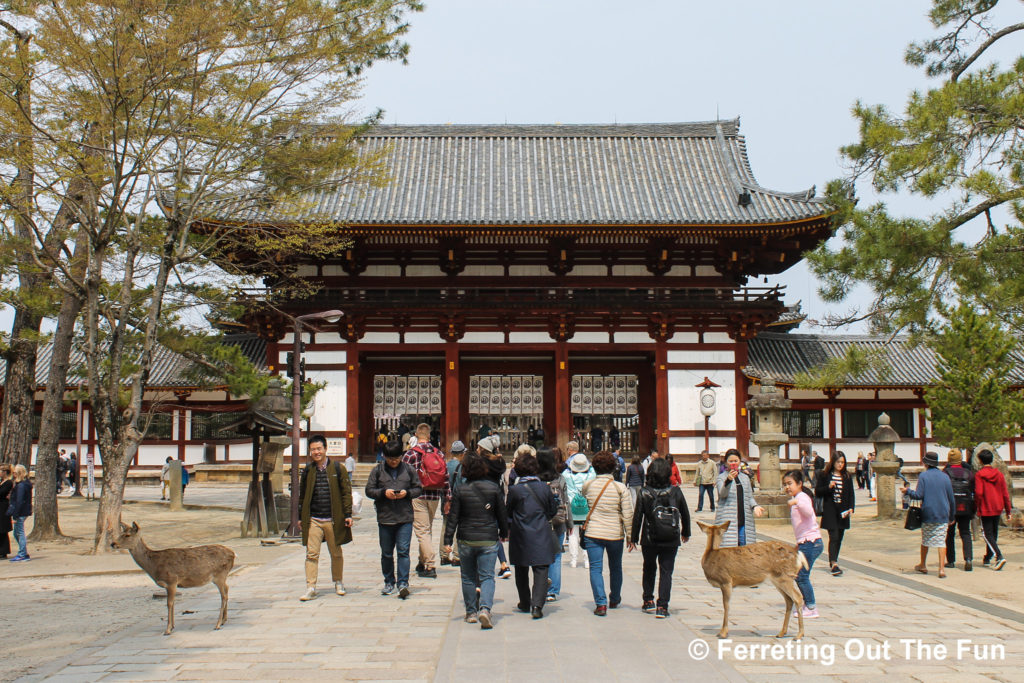
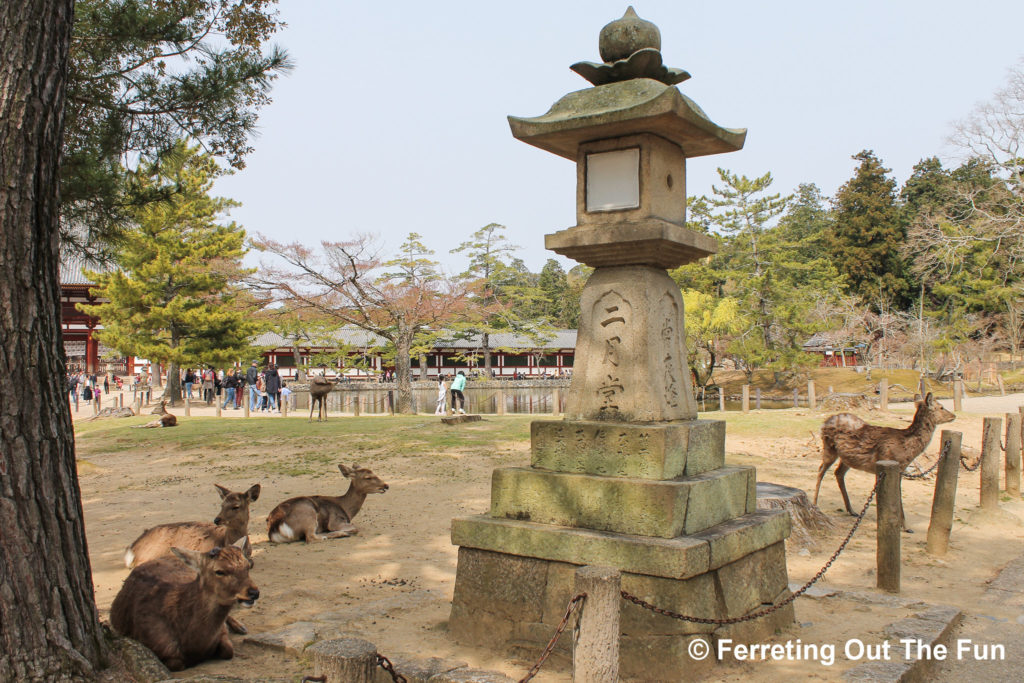
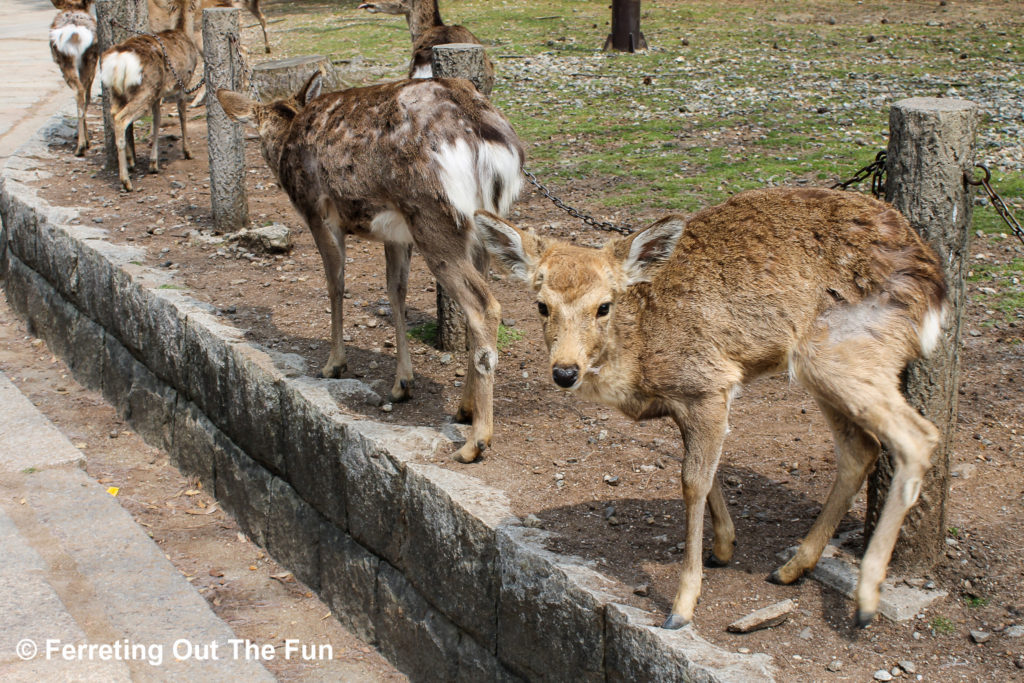
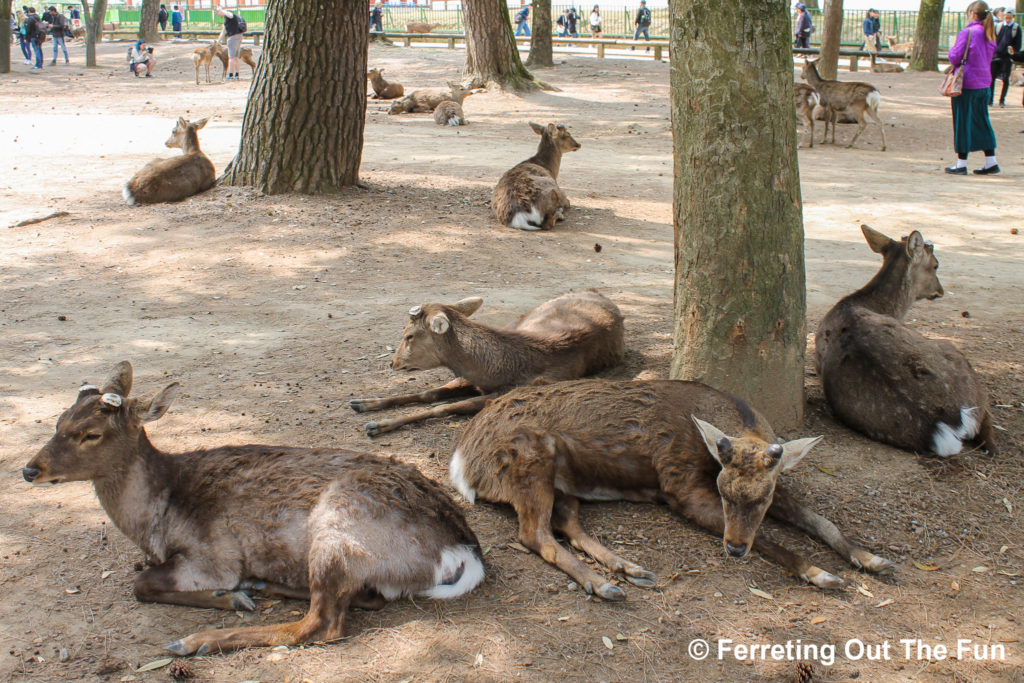
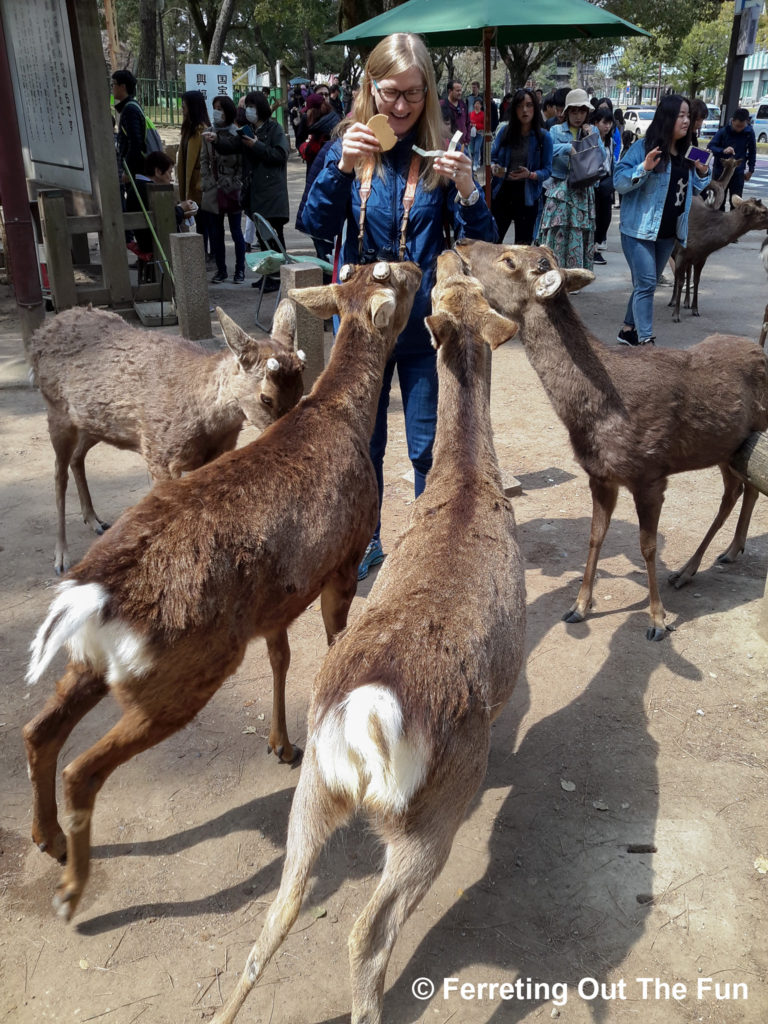
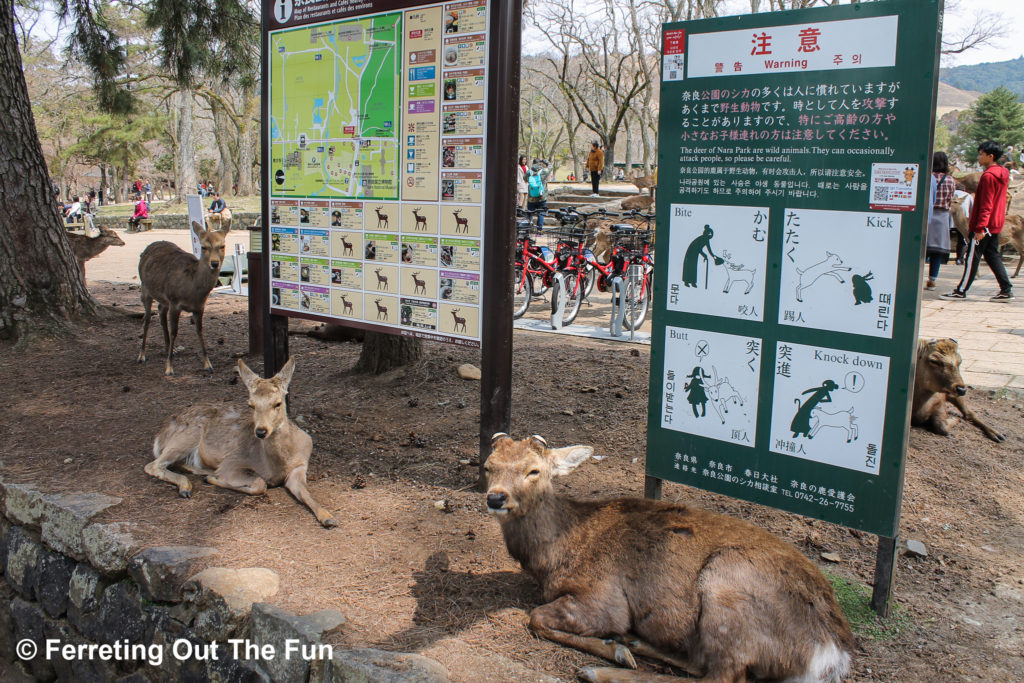
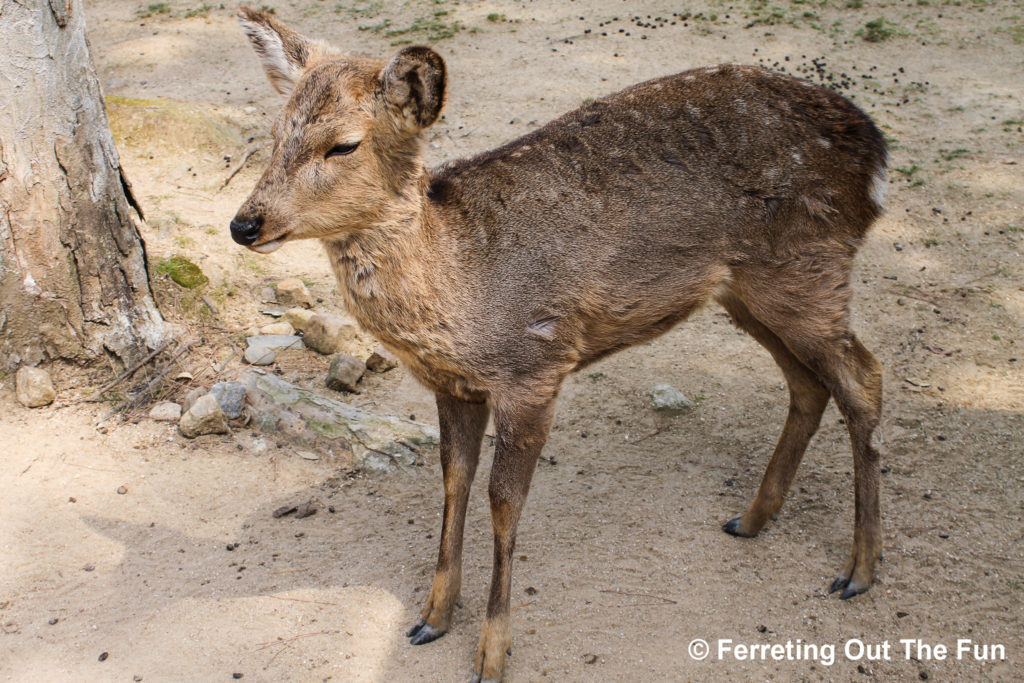
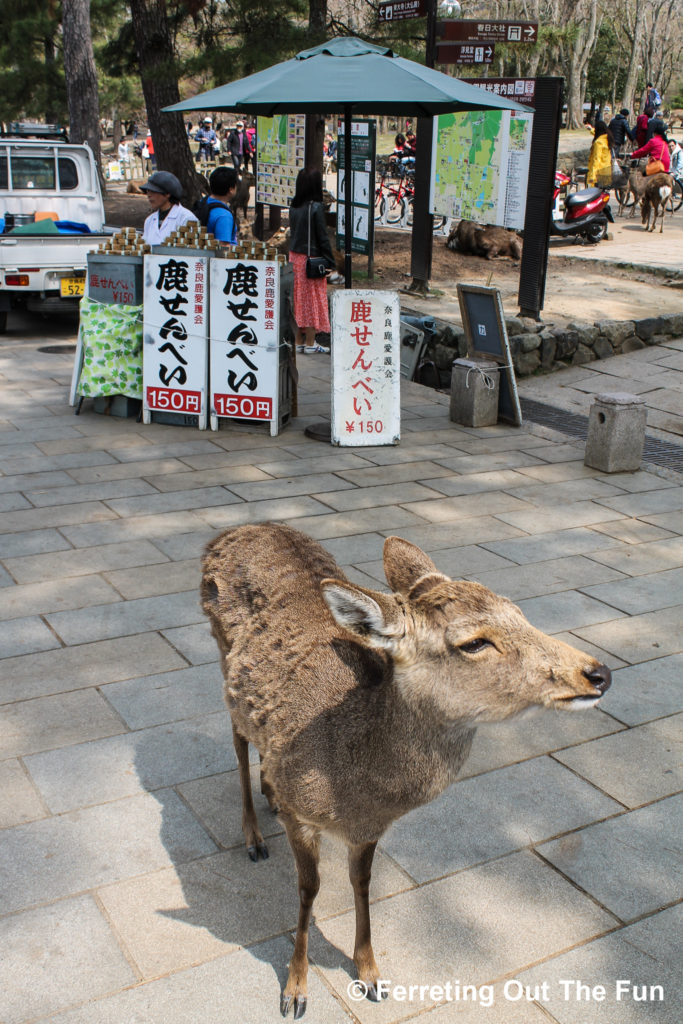
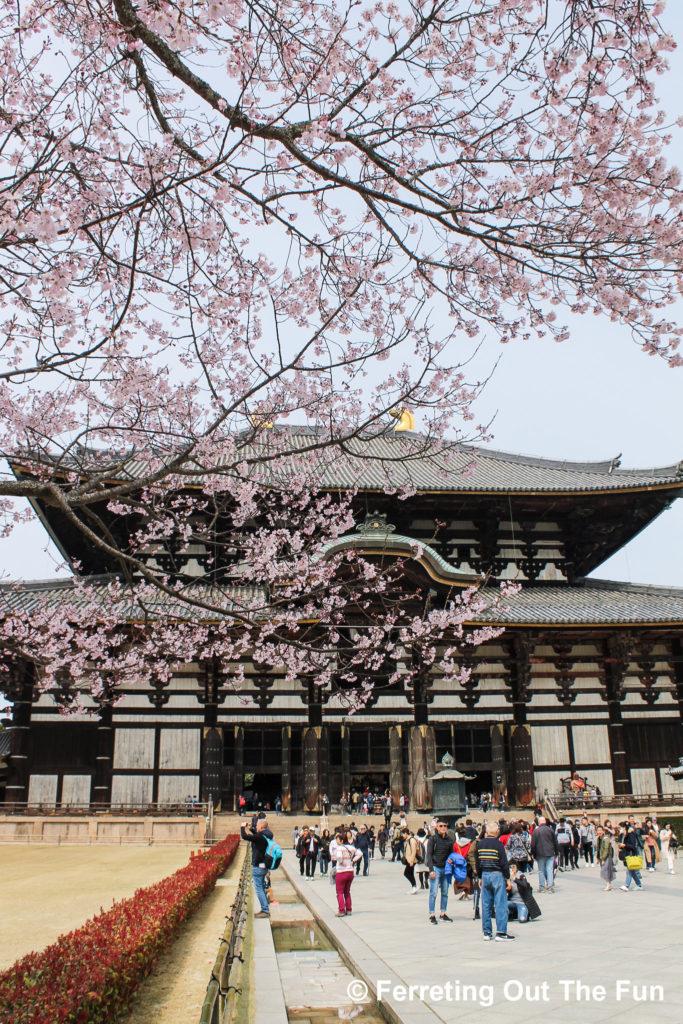
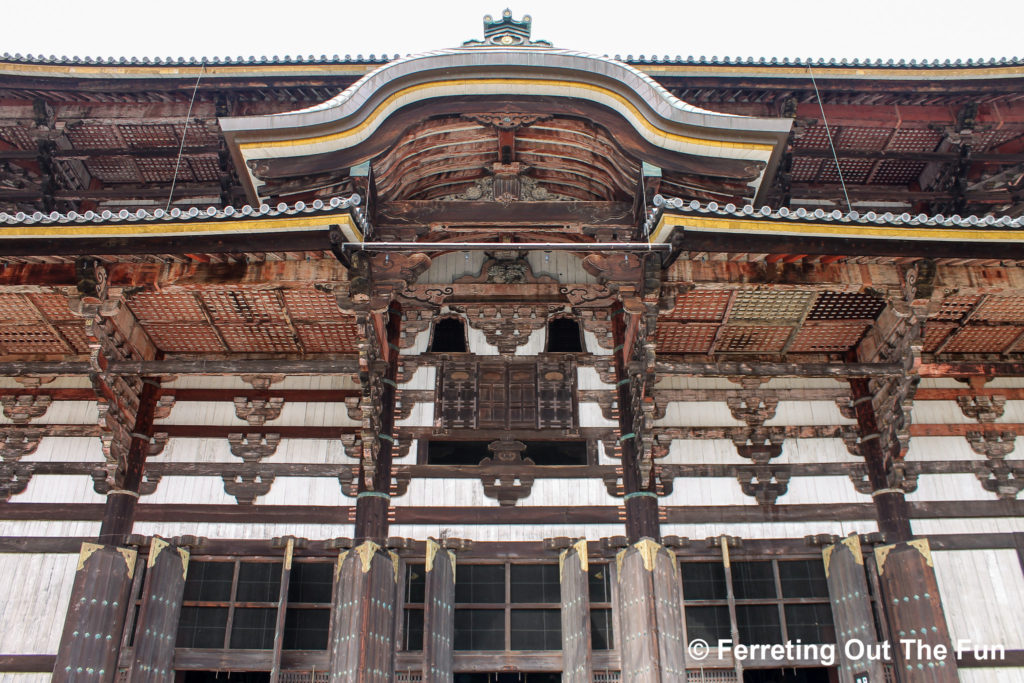
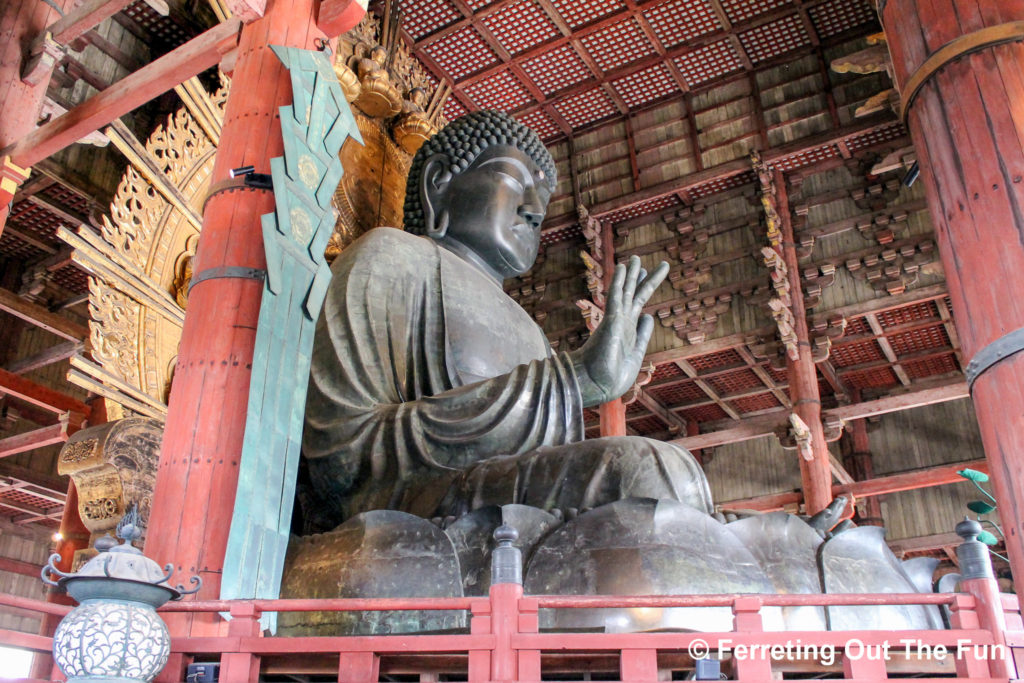
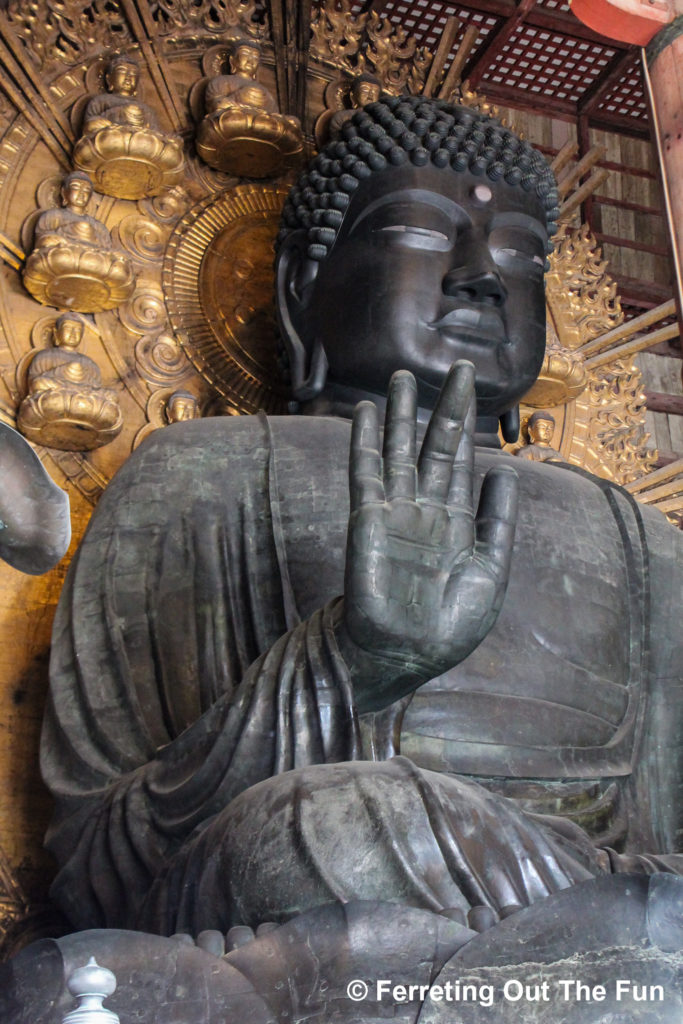
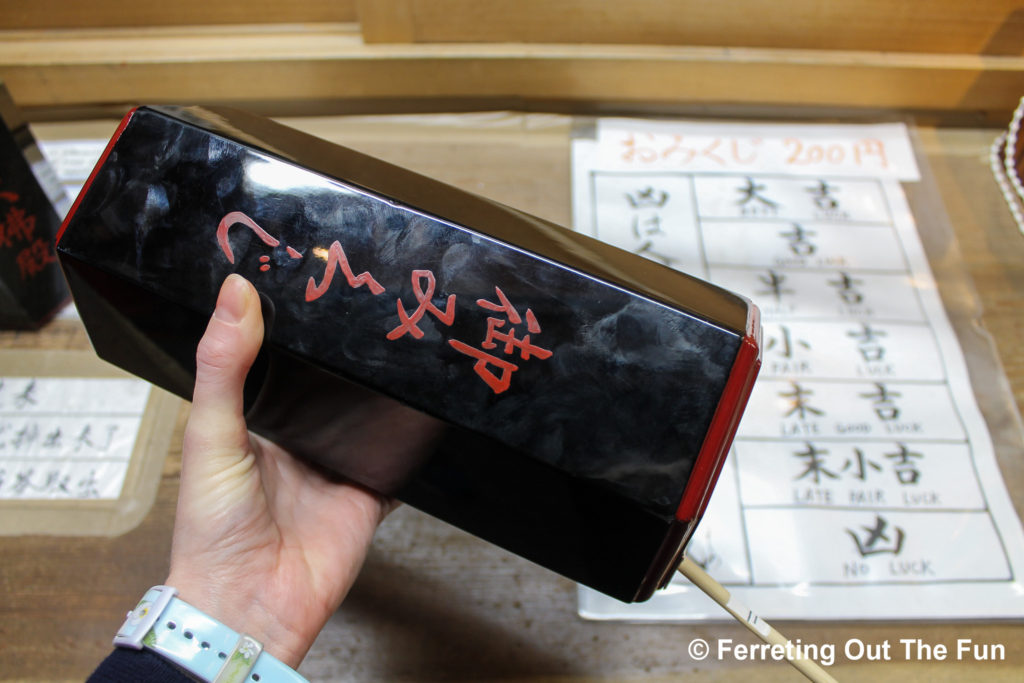
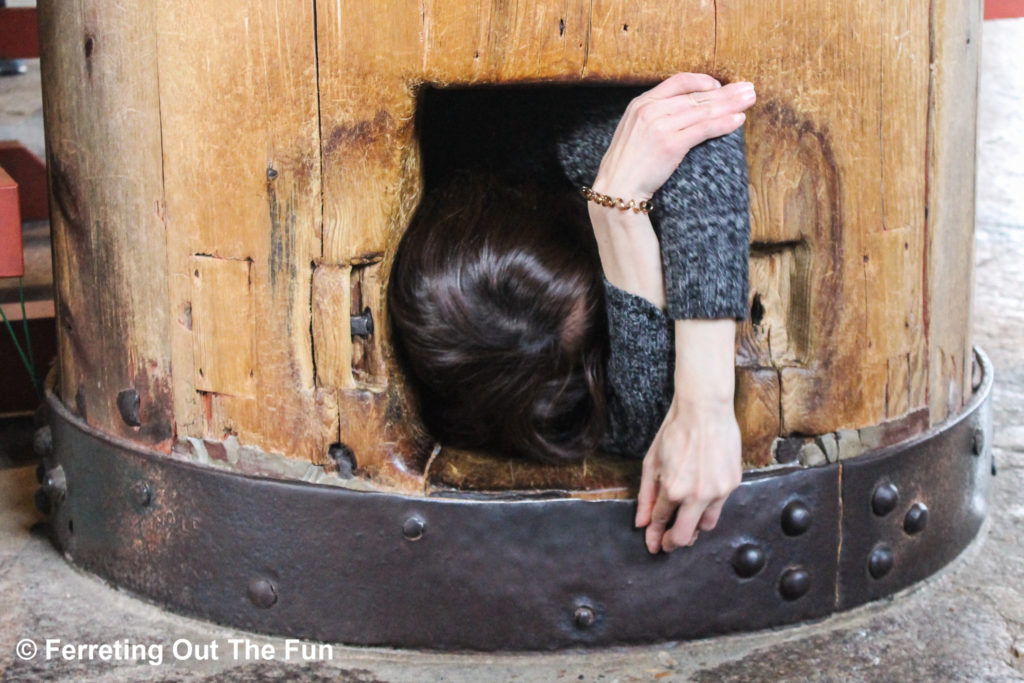
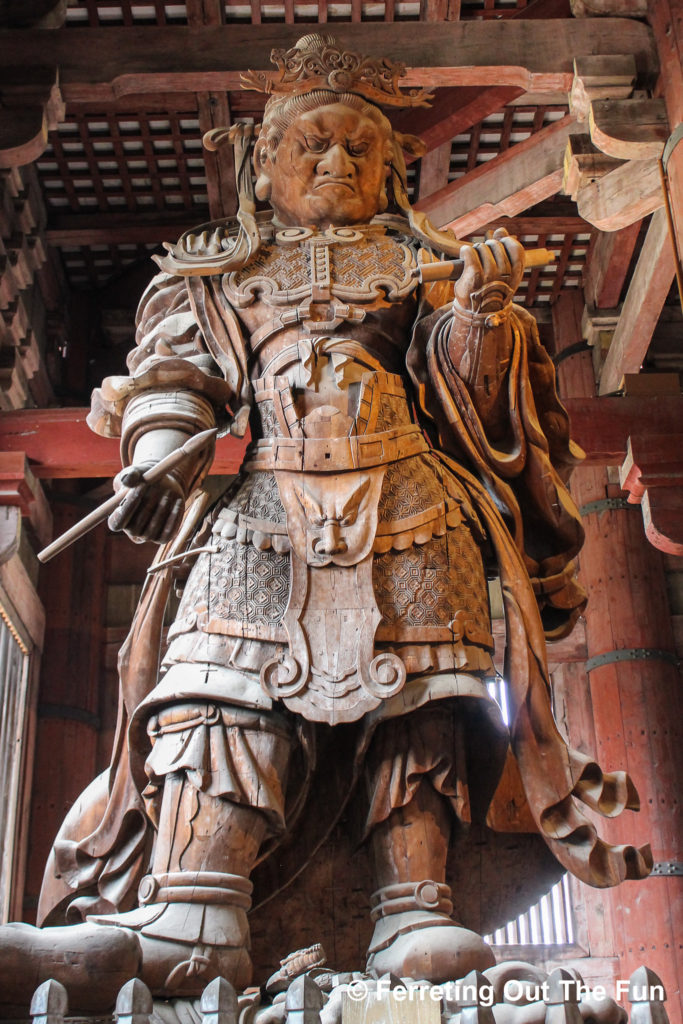
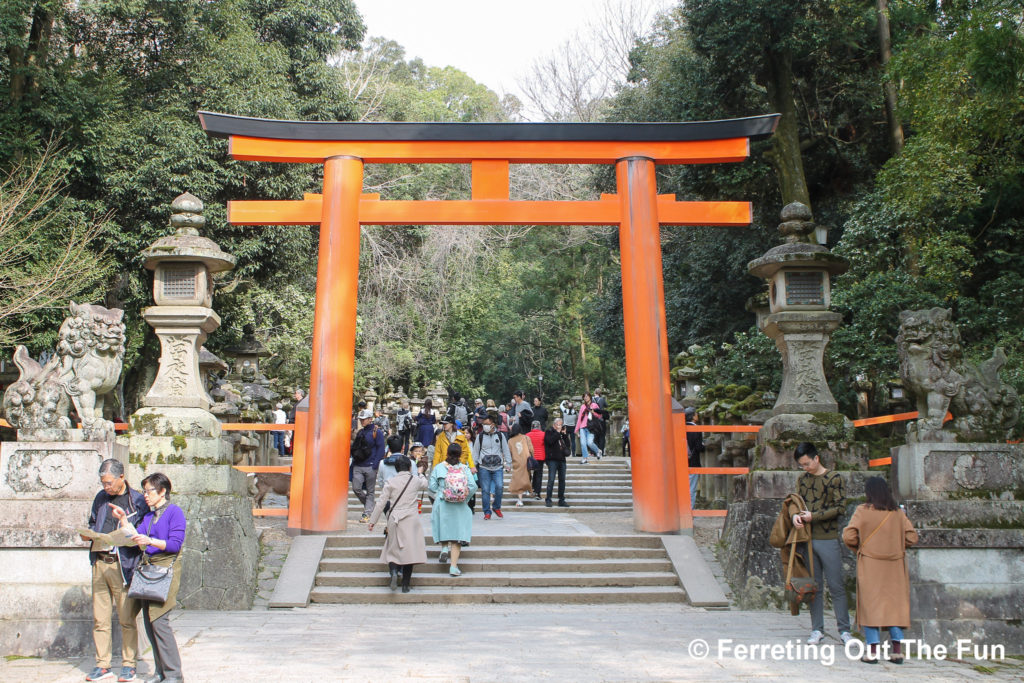
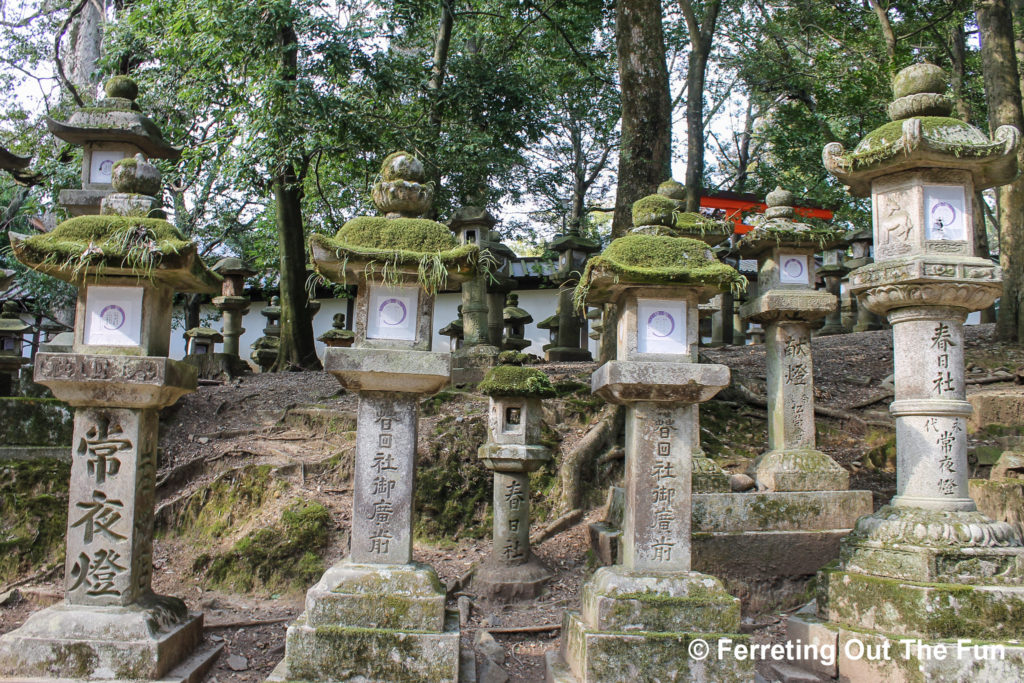
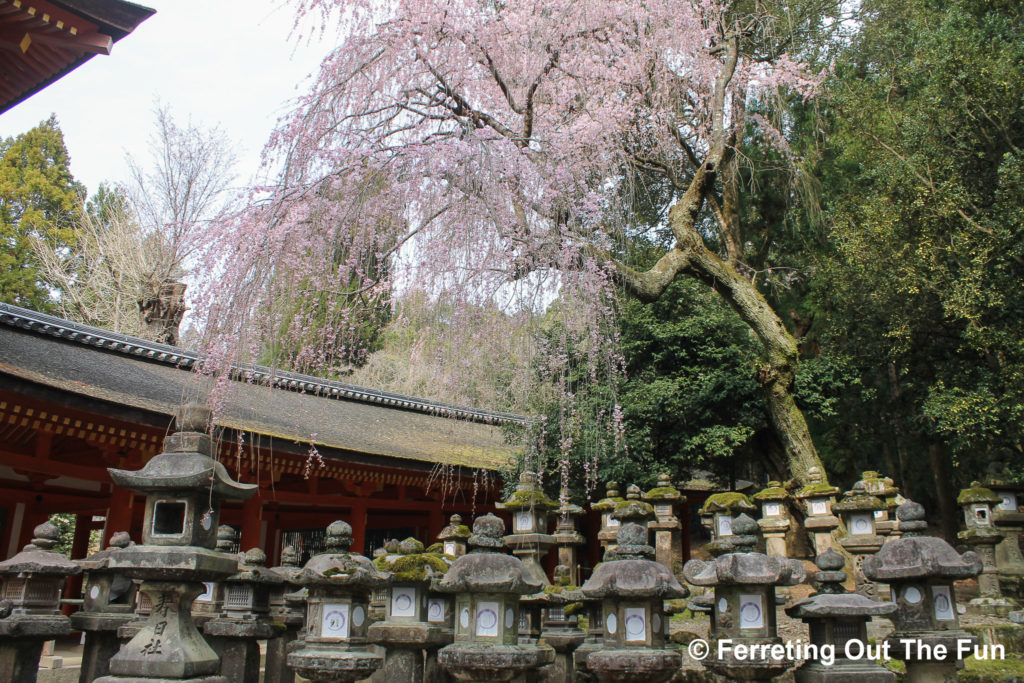
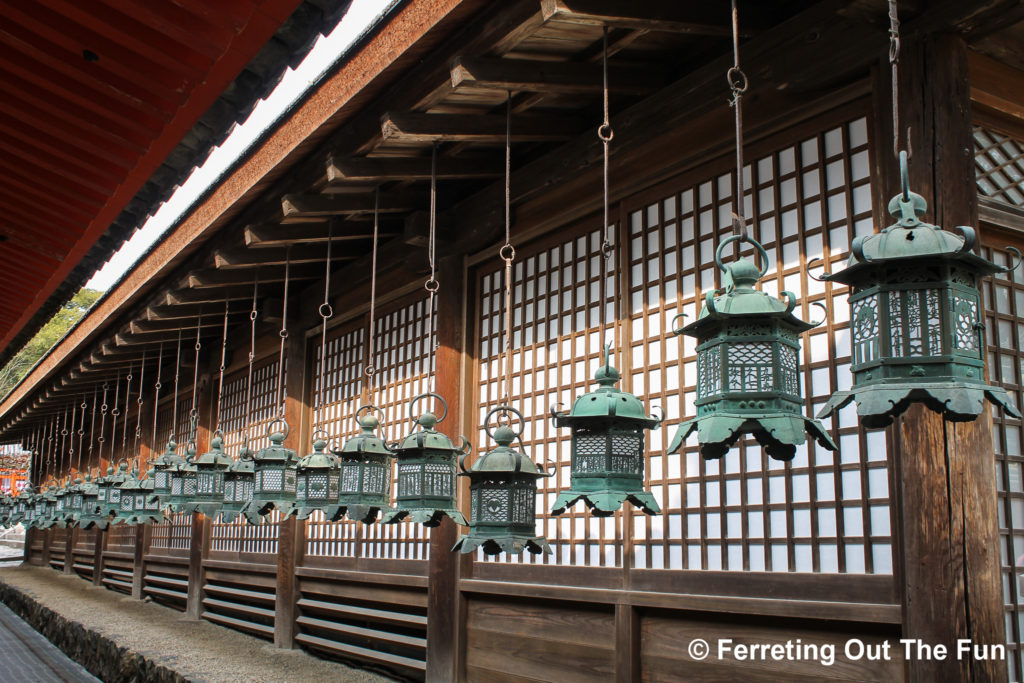
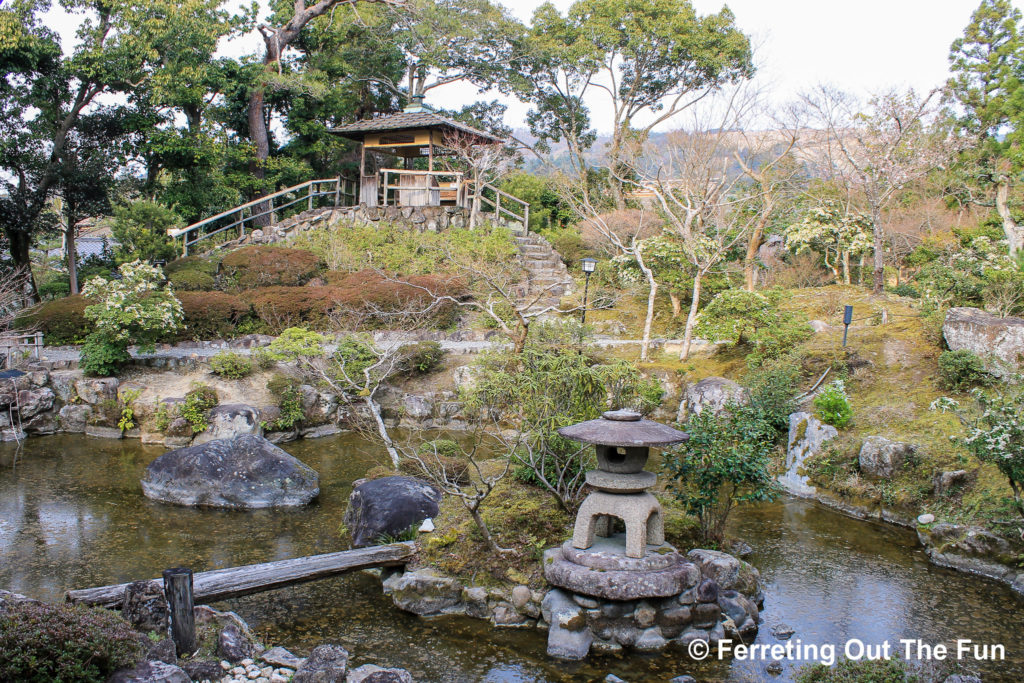
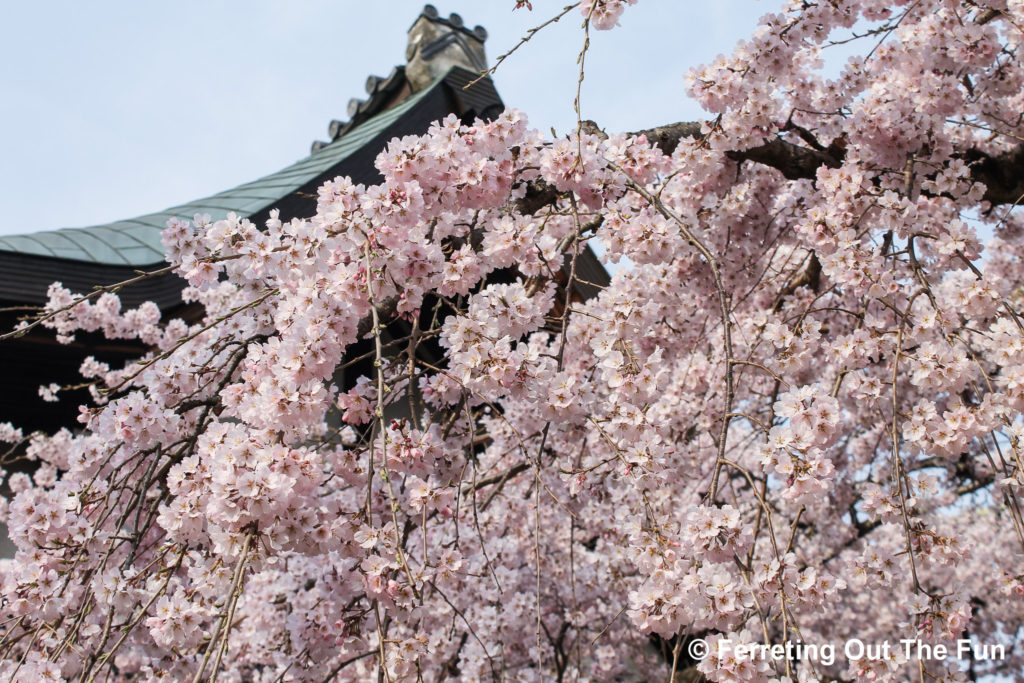
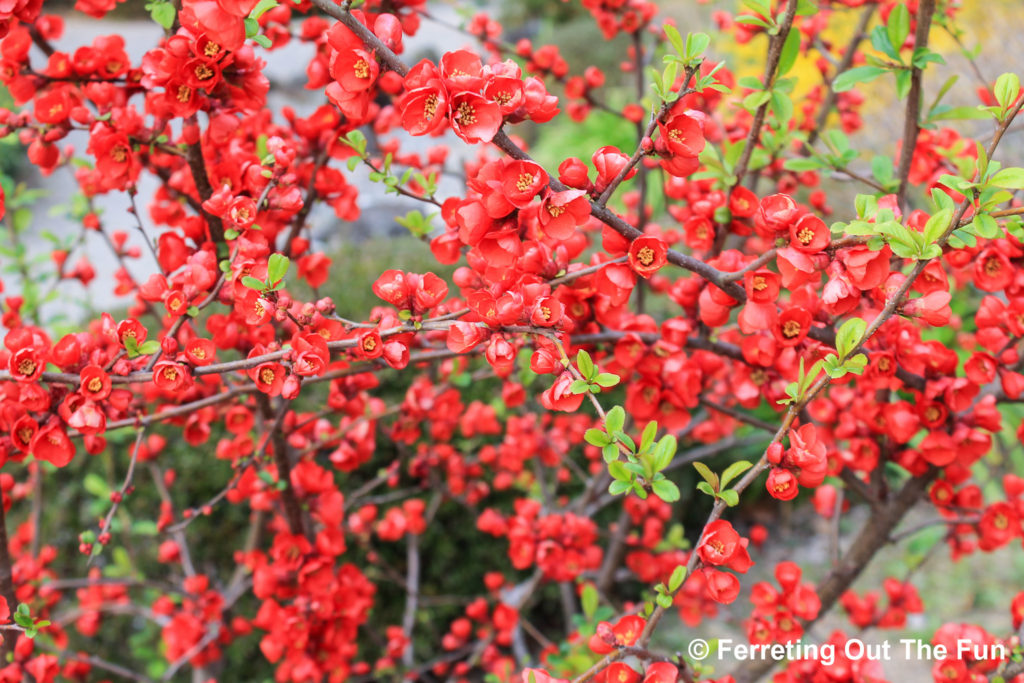
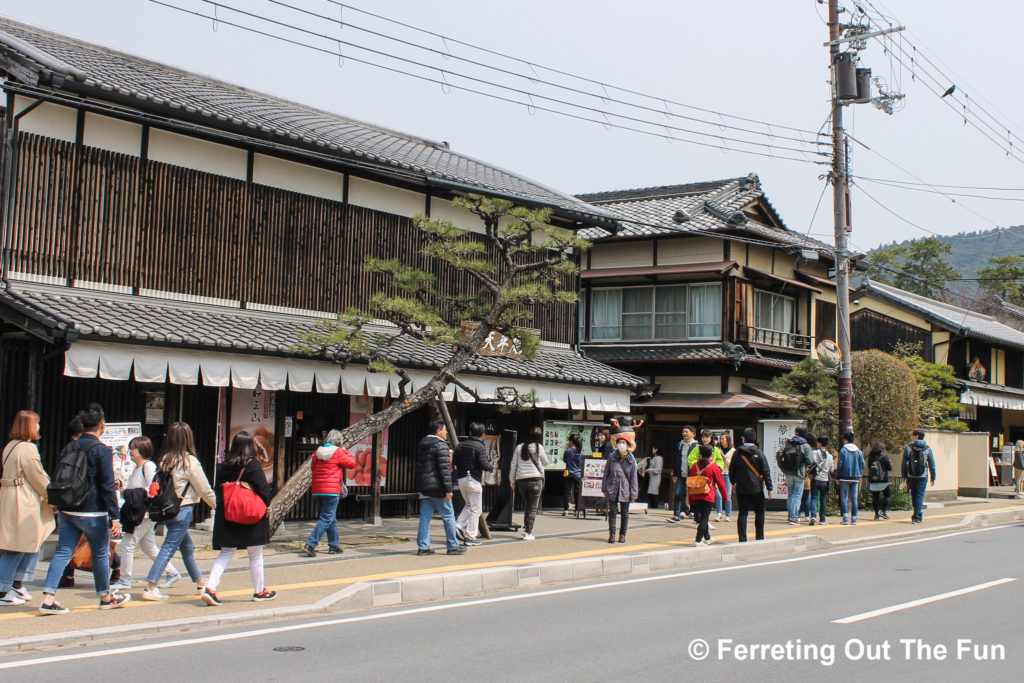
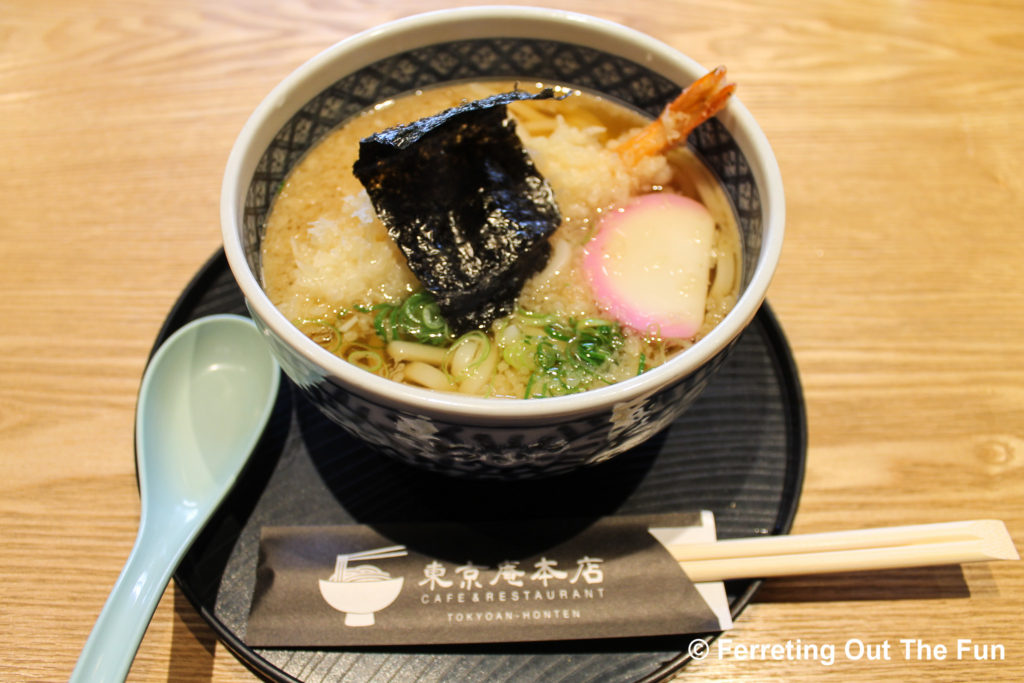
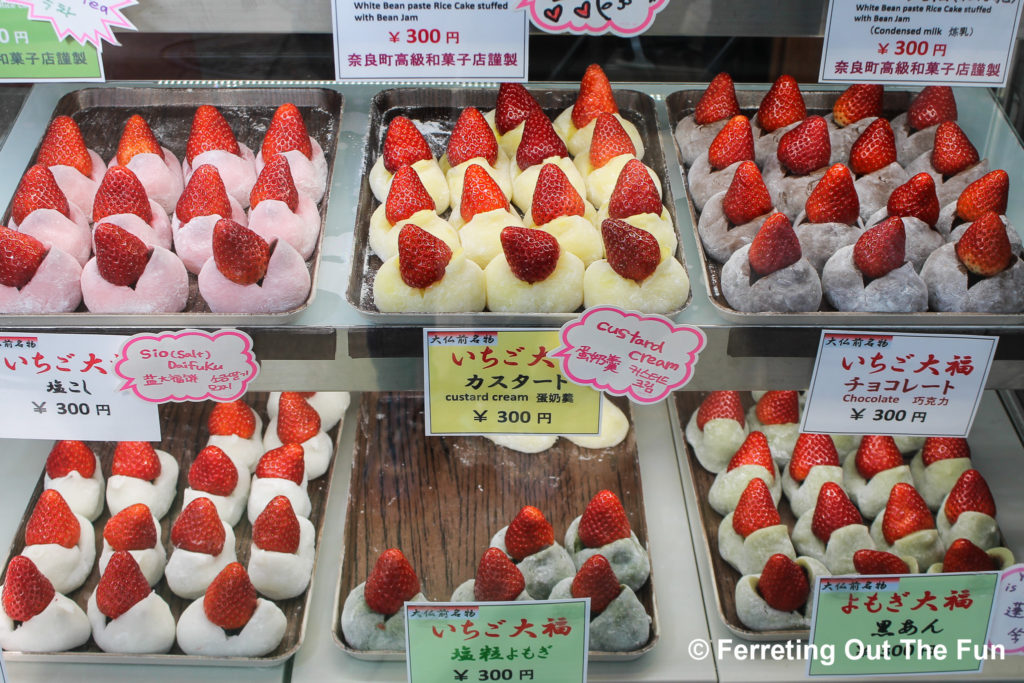
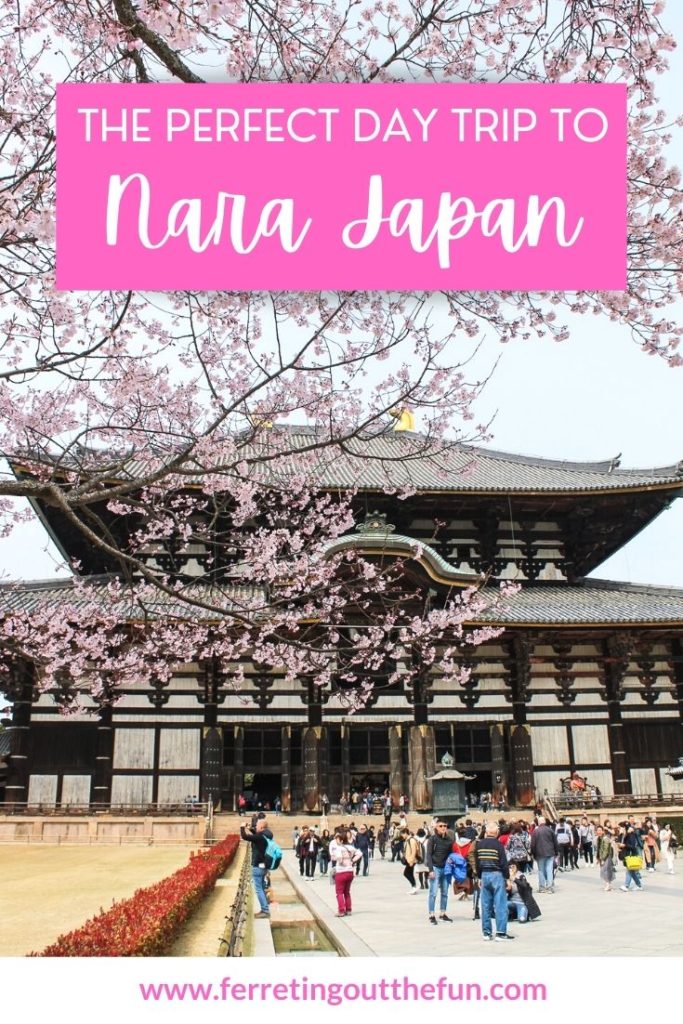
[…] Nara is home to eight UNESCO World Heritage Sites, including one of Japan’s most important Buddhist temples, Todai-ji. It holds the Great Buddha, which dates to the eighth century AD and is one of the largest bronze statues in the world. To reach Nara’s historic temples and shrines, you will pass through a large park where hundreds of deer roam free. Once considered messengers of the gods, these cute residents are tame and eager to be fed the special deer biscuits on offer. Nara’s close proximity to Osaka makes it an ideal day trip destination. Read my detailed guide here. […]